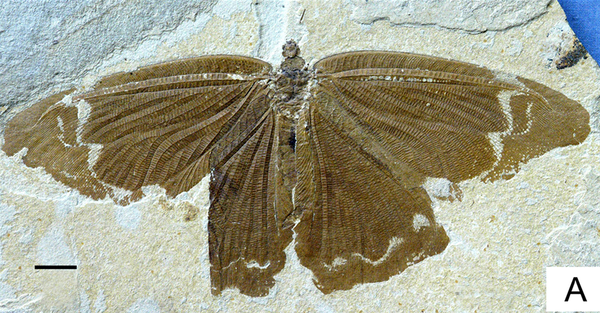This article was published in Scientific American’s former blog network and reflects the views of the author, not necessarily those of Scientific American
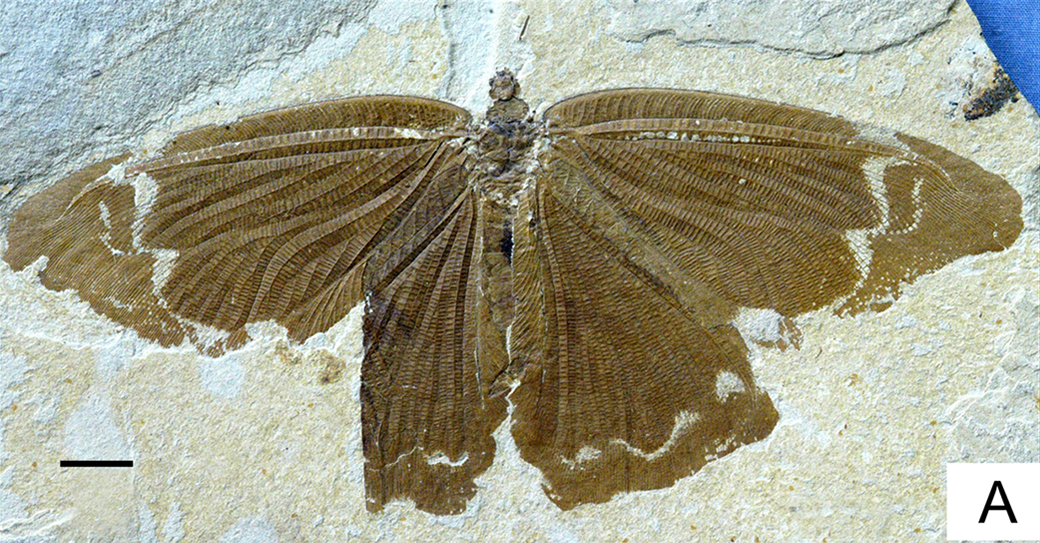
A kalligrammatid lacewing. Credit: Yang et al. 2014
Biologists Steven Jay Gould and Simon Conway Morrisfamously butted heads over a simple thought experiment: if we were to “rewind the tape” of life and allow it to play out again, would we get the same result?
Gould argued no. Not only would life be radically different, the odds are strong that nothing similar to humans would have evolved. Early evolution of complex life in the form of the Ediacaran and Cambrian explosions produced scads of bizarre creatures related to nothing alive today and many went extinct, probably, due to nothing more than bad luck.
On supporting science journalism
If you're enjoying this article, consider supporting our award-winning journalism by subscribing. By purchasing a subscription you are helping to ensure the future of impactful stories about the discoveries and ideas shaping our world today.
Conway Morris argued yes: without any sort of goal, the unchanging laws of physics and demands of Earth’s environments dictate that more or less the same creatures would and have evolved repeatedly on Earth. Such a process, he argued, inevitably results in the emergence of beings with high intelligence. In other words, the environment induces the evolution of more or less the same solutions (though small details may obviously be different) when unrelated groups of organisms move into the same environments. And indeed, there are countless examples of such convergent evolution: dolphins and ichthyosaurs, cactuses in the Americas and euphorbias in Africa, and placental and marsupial saber toothed tigers.
On the other hand, Peter Bowler, a reviewer writing about Conway Morris's book Crucible of Creation for American Scientist, argued that Conway Morris’s arguments are persuasive until you consider that many successful creatures seem to have no other parallel in Earth history – kangaroos, for instance. Another example that comes to my mind are the trilobites, although one might make a case for the giant isopods as trilobites, Take 2.
It is a fun question to think about (particularly in a bar over drinks), if ultimately unanswerable. But Conway Morris’s arguments have surely received a boost froma a striking example of convergence that has become newly clear over the last few years, most recently in the Proceedings of the Royal Society B but also a few years ago in BMC Evolutionary Biology.
Apparently, way back when Dinosaurs Ruled the Earth, a group of insects called lacewings produced butterflies. Not the butterflies we see flitting around today from the Order Lepidoptera, but floating, flapping, nectar-sucking flibbertigibbits nonetheless, with wings adorned with eyespots, veins, and scales.
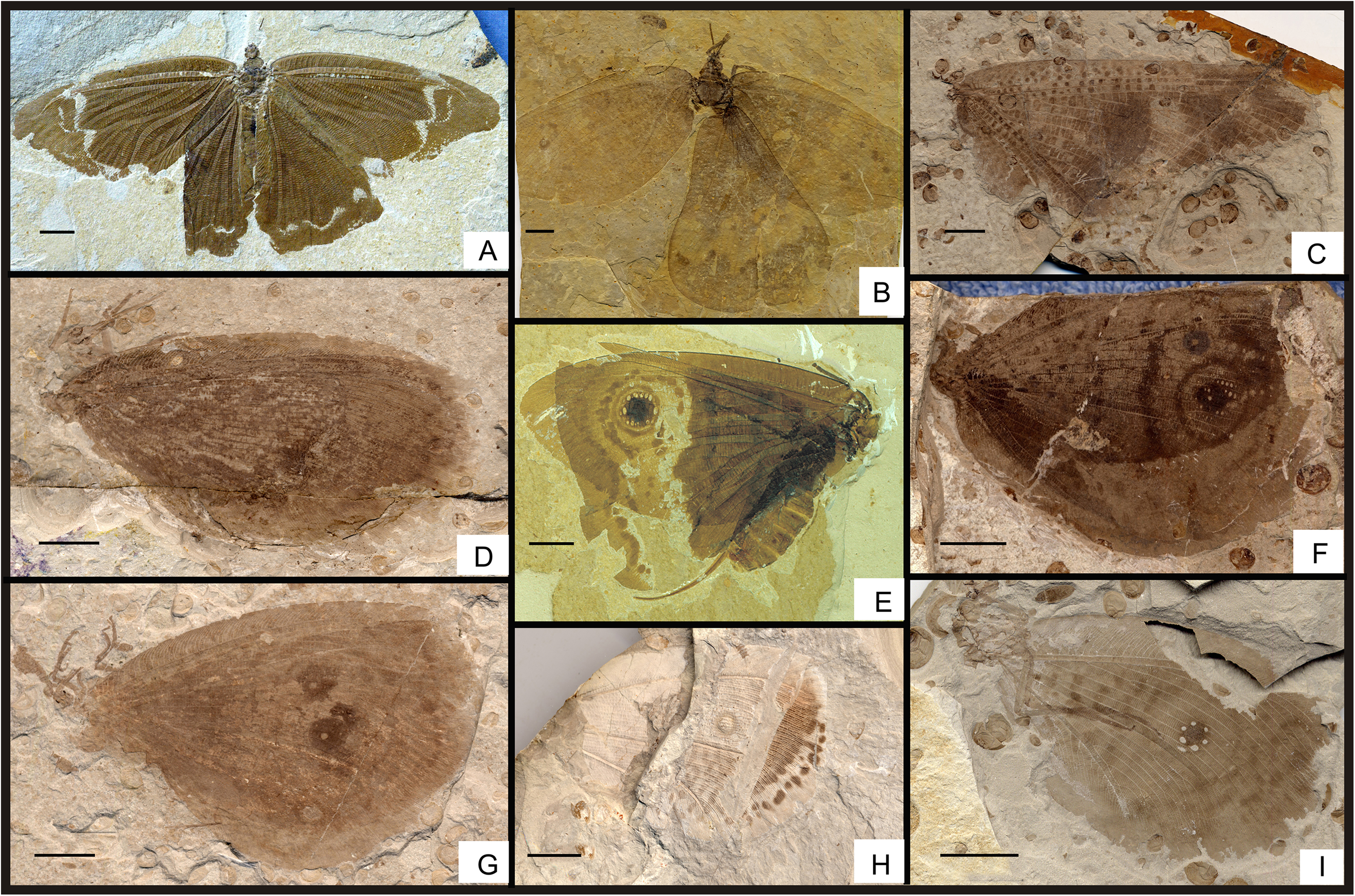
Credit: Yang et al. 2014
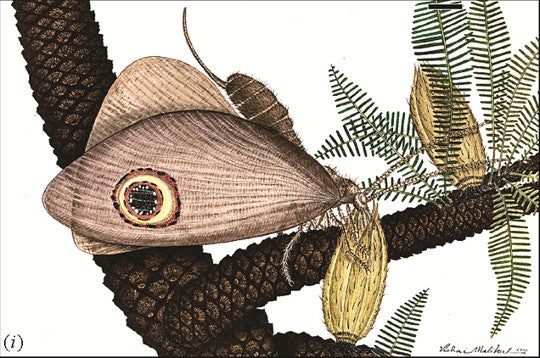
Reconstruction of the kalligrammatid lacewing Orogramma illecebrosa on the plant Williamsonia, feeding from a cone. Note the fossil in panel (e) above, and the uncanny resemblence of the underwing to the tailfin of the WWII B-17 Flying Fortress bomber. Credit: Labandeira et al. 2016
Mesozoic butterflies seem to have appeared so similar to today’s incarnation that at a few paces you’d probably not notice a difference. They evolved 165 million years ago, disappearing just 45 million years later, a full 45 million years before the first modern caterpillar decided to grow up and become a beee-youuuu-tee-ful butterfly. Again.
Oh, and these first butterflies did not frequent flowers, because flowers were still a gleam in Mother Nature’s eye. Tthe first definite floral fossil dates from 125 million years ago – about the time these ancient butterflies were going extinct – but the first flower must have evolved at least a little before that. The flowers that did exist were small, inconspicuous, and aquatic with short, butterfly-unfriendly floral tubes.
Instead, these Jurassic butterflies seem to have alighted on seed-bearing, cone-making trees. Though they did not make flowers, these plants did craft cones studded with long tubes ending in nectar and pollen. And nectar + flying insect, evidently, are the prerequisites for evolution to cook up a butterfly.
Cretaceous butterflies are more formally known as kalligrammatid lacewings. Lacewings still fill the Earth today. Their members include little-known groups like antlions (also charmingly called doodlebugs because of the tracks the larvae make in sand); owlflies; and silky winged-, spoon-winged, and thread-winged lacewings.
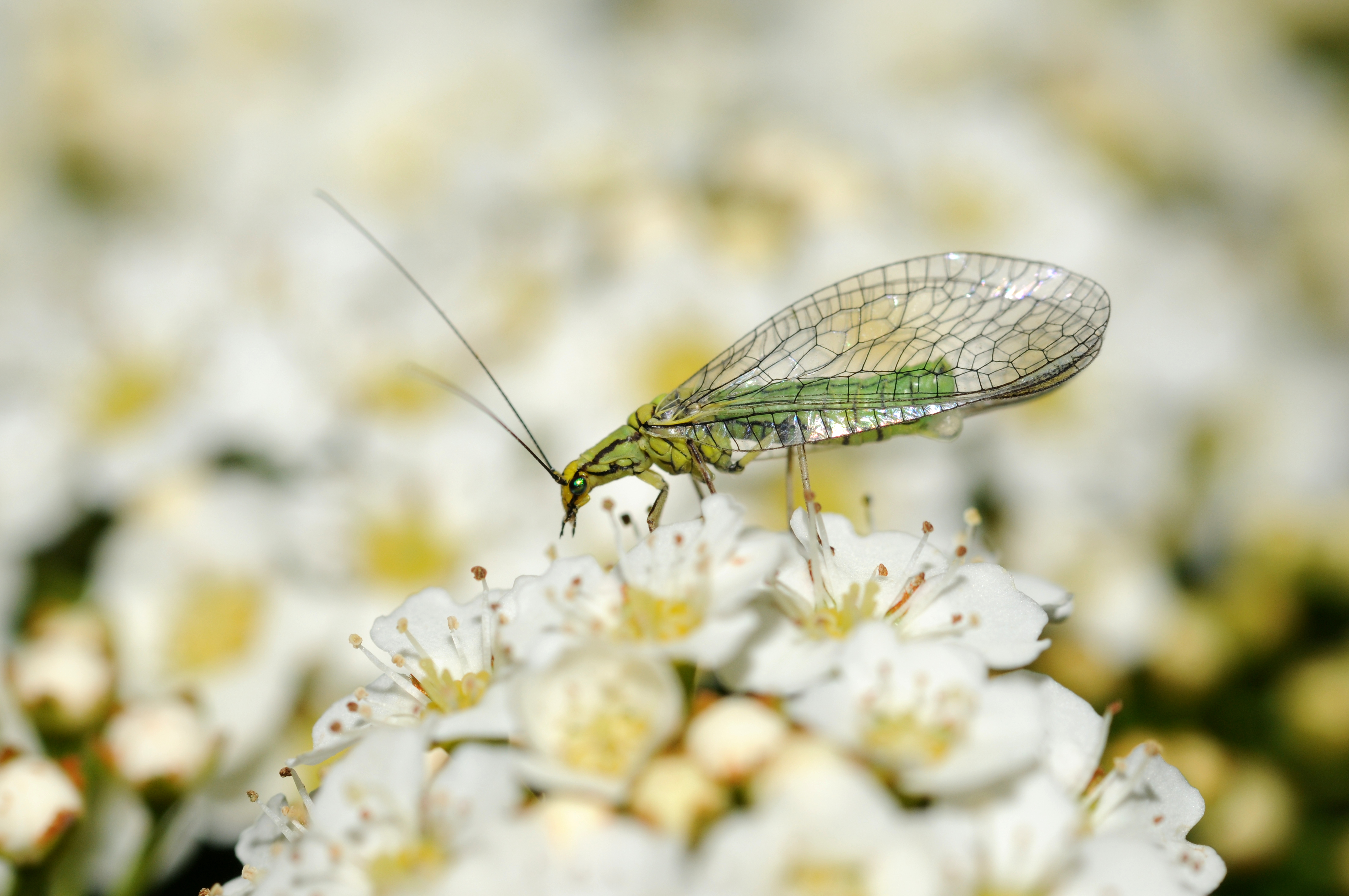
Credit: Thomas Bresson Flickr (CC BY 2.0)
The insects sport the eponymous thin, transparent, wings with boldly reticulate veins. Modern lacewings usually have chewing mouthparts, because both young and adults tend to eat other insects. Notably, the young may also bear piercing and sucking mouthparts for (shudder) accomplishing the same goal.
Kalligrammatid lacewing fossils have been known about for some time, but most specimens were poorly preserved, limiting what we could tell about them. Then a collection of beautifully preserved specimens turned up in northeastern China in lake deposits, a common source of exquisite fossils. The the tranquil settling of animals into fine sediments on lake bottoms and the relative lack of oxygen favors good fossilization. Such fossils can yield surface details and sometimes even color patterns.
Kalligrammatids seem to have lived almost exclusively on land that is today Europe and Asia during the Jurassic and Cretaceous. They were large, with wingspans in excess of six inches, and would have been some of the largest and most conspicuous insects of their day. It would be accurate to imagine them flitting past a herd of grazing dinosaurs.
Modern butterflies are defined by suite of traits that includes daytime activity, long, straw-like sucking mouthparts, wing eyespot patterns and wing scales (Lepidoptera literally means "scale wing"). All of these traits that can be determined from fossils are present in kalligrammatids.
The fossils tell us the first kalligrammatids shared the chewing mouthparts that characterize lacewings today, and also lacked wing spots or scales. But later, their mouthparts acquired a straw-like proboscis for drinking nectar, a mouthpart transition that the ancestors of modern butterflies underwent as well. In both groups, separate chewing mouthparts fused into proboscises that are long, flexible, and lack piercing structures.
.jpg?w=186)
Overlay drawing of a fossil of Kallihemerobiinae gen. et sp. indet. (JIU, dorsal view) from the late Middle Jurassic (Jiulongshan Fm., 165 Ma, JIU) of northeastern China. The false colors of the overlay show: Yellow -- proboscis; green -- maxillary palps; purple -- antennae; orange -- labrum; blue -- compound eyes. Scale bar 5 mm. Fig. S1p. Credit: Labandeira et al. 2016
Kalligrammatids also had one or more pumps inside their heads for generating suction, just like modern butterflies. Both groups also seem to have wielded proboscises with a variety of thicknesses and lengths for harvesting the nectar of different plants.
Spots and eyespots with vividly contrasting concentric rings of color also very soon appeared on the upper surface of wings. They were likely chosen by natural selection for the same reasons butterflies use them today: to startle predators like early birds or small dinosaurs, or failing that, to deflect them to the wings away from the body.
At least six different kinds of spots have been found in fossils so far. Several of them closely resemble those of modern butterflies, and one type -- Type 1 -- evolved at least three separate times even within the kalligramatids.
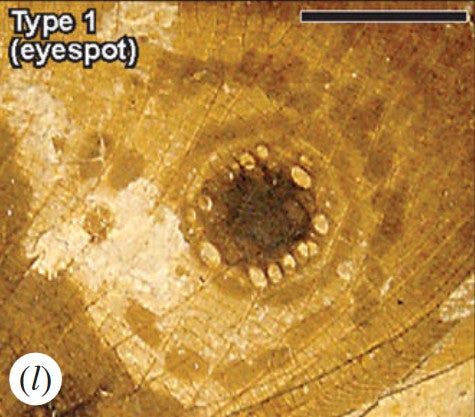
Type 1 wing eyespot of the kalligrammatid lacewing Orogramma illecebrosa. Notice the two outer rings and about 15 little white dots (ocules) surrounding the central black spot. Fig. 1l. Credit: Labandeira et al. 2016
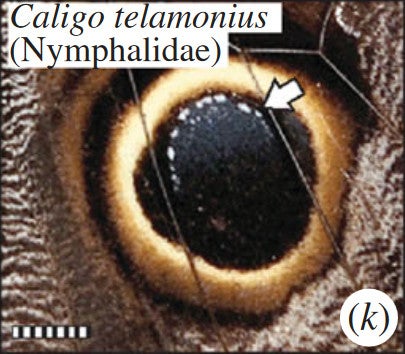
Modern owl butterfly eyespot. Arrow points to ocules. Fig. 2k. Credit: Labandeira et al. 2016
Something about this pattern must be enormously beneficial to butterflies.
The pigment melanin – a UV-shielding compound found in human skin and almost every living organism except, for some reason, arachnids – may even have been present in the dark part of the eyespots, though the evidence for this was not conclusive. This, too, is a strategy employed by modern butterflies.
Three different plant groups were the most likely targets of kalligrammatid proboscises: cycads, Caytonialeans, and Bennettitaleans. All three were or are gymnosperms, naked seed plants like pine trees and spruces that make seeds, usually in cones, but do not make flowers. Cycads are still with us, though in nothing like the numbers or diversity seen in the Mesozoic. Often called sago palms, they look like squat palm trees.
Benettitaleans and Caytonialeans were also seed-fern type trees that probably bore some, maybe much, resemblance to cycads.

Credit: Matteo De Stefano MUSE (CC BY-SA 3.0)
Both these groups made reproductive structures with pollen sacs and eggs buried deep inside next to food-producing secretory glands and “pollination droplets”, the sort of set-up that would benefit from a long flexible probe attached to an airborne nectar-sucking insect. Bolstering this hypothesis, analyses of what appears to be a kalligrammatid who died mid-swallow with a ball of food trapped in its throat reveals the bolus has a high carbon content consistent with nectar.
That kalligrammatid fossils have been found with what amounts to pollen crumbs on and near their mouthparts also seem to suggest pollen snacking, a protein-acquiring habit that also happens to be a good way to pollinate a plant. If nectar and pollen were indeed their food sources, they are consistent with the diet of modern butterflies.
We also know these host plants separated their male and female parts either on the same plant or on different plants entirely to discourage inbreeding. Wind would be only marginally effective in delivering pollen to egg in these set-ups, but cone-homing insects would solve the problem in a jiffy.
Some of the kalligrammatids also seem to have had a curved, saw-toothed ovipositor for slitting open plants and depositing eggs inside, as in i, j, and k below (and also in the reconstructed image above).
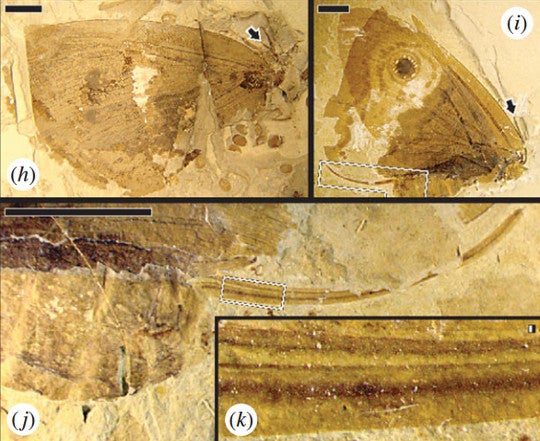
Kalligramma brachyrhyncha showing whole insect with arrow pointing to proboscis (h) Oregramma illecebrosa showing proboscis (arrow) and ovipositor (box). Closeup of ovipositor (j) and (k). Fig. 1h,i,j, and k. Credit: Labandeira et al. 2016
Kallagrammatid larvae that grew up and fed in these plants would explain the apparent insect tunnels found inside Williamsonia fossils, a Bennettitalean plant.
Just how many kinds of kalligrammatids were there? From the fossils we have, we think there were at least 20 genera with 51 species. But fossils, surely, represent only a small slice of the actual diversity that existed.
What ended the 40-million-year long kalligrammatid party? That would be the flowering plants, whose proliferation seems to have driven the Bennittitaleans to extinction – or at least, to have taken advantage of their disappearance to engage in a series of favorable real estate deals – and 45 million years later ushered in the appearance of hordes of their own support crews of butterflies.
To Conway Morris, to me, and to many others, it is striking how often evolution has produced the same solutions to the same problems in the same habitats with presumably the same selective pressures, starting with very different raw material. As with most arguments of this nature, the truth probably lies in between the two extremes. In my opinion, Earth on replay would doubtless have many similar – perhaps startlingly so -- organisms to what we see today. And probably also some BIG surprises.
Would deeply intelligent life evolve once more? For that I have no answer, for we have evolved but once. We may be kangaroos, or we may be butterflies whose doppelgangers will look back on our remains millions of years hence with as much amazement as we gaze at kalligrammatids.
References
Labandeira, Conrad C., Qiang Yang, Jorge A. Santiago-Blay, Carol L. Hotton, Antónia Monteiro, Yong-Jie Wang, Yulia Goreva et al. "The evolutionary convergence of mid-Mesozoic lacewings and Cenozoic butterflies." In Proc. R. Soc. B, vol. 283, no. 1824, p. 20152893. The Royal Society, 2016.
Yang, Qiang, Yongjie Wang, Conrad C. Labandeira, Chungkun Shih, and Dong Ren. "Mesozoic lacewings from China provide phylogenetic insight into evolution of the Kalligrammatidae (Neuroptera)." BMC Evolutionary Biology 14, no. 1 (2014): 1.
